Tex Hill – Training and First Assignment (part 1)
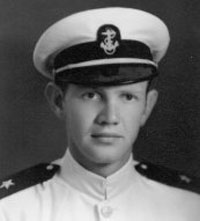 After graduating high school, Tex attended Texas A&M and then Austin college and graduated in 1938. He then applied for the Army Air Corp, but didn’t get in. So he tried the Naval Aviation program, which accepted him as a seaman, second class at Opa Locks, Florida. Tex and 12 other candidates took a three-week class, which began with classroom training and concluded with 10 hours of flying instruction in a Stearman NS-1 biplane trainer.
After graduating high school, Tex attended Texas A&M and then Austin college and graduated in 1938. He then applied for the Army Air Corp, but didn’t get in. So he tried the Naval Aviation program, which accepted him as a seaman, second class at Opa Locks, Florida. Tex and 12 other candidates took a three-week class, which began with classroom training and concluded with 10 hours of flying instruction in a Stearman NS-1 biplane trainer.
Accepted as a cadet in Class 121-C at Naval Air Station Pensacola where he underwent a further 13 week of training. In Pensacola, classes started every month and overlapped each other. It was in these other classes that Tex met three other future Flying Tigers, Ed Rector, Bert Christman, and Scarsdale Jack Newkirk.
Starting with ‘Squadron One’, Tex trained on the N3N Canary “Yellow Peril” on platoons. Having passed Squadron One, he moved on to Squadron Two for land based planes such as the Stearman NS-1 and then onto Squadron Three for the Vought SBU and 03U Corsair. He skipped training on the Consolidated PBY Catalina and went straight to fighters, the North American NJ-1 and one that all the hopeful future fighter pilots wanted to fly at the time, the Boeing F4B-4. “We did our gunnery in that biplane… I felt more comfortable in that airplane than in airplane I’ve ever been in”, said Tex.
Tex was always a practical jokester and liked to buzz the local lover’s lane. At the same time, Tex had his first taste in the dangers of being a fighter pilot. Tex, Jack Newkirk, and three other pilots took off in their Boeing F4B-4s for night time navigation and landing exercises. From Santa Rosa Island, they were to fly over the Gulf of Mexico and navigate to preselected waypoints. Thirty minutes into the flight, heavy fog began to roll into the area and NAS Pensacola ordered all aircraft to return to base. Tex, Newkirk, and another pilot, Fernando Guzman, communicated by radio to ensure everyone got the message to go home. Tex made it back just as the fog rolled in and Guzman was right behind him. By this time visibility was almost down to zero and Guzman lost sight of the runway. When he touched down, the aircraft’s left wing hit the ground, cart-wheeled, and exploded. Guzman was killed. Newkirk saw the glow of the explosion and was immediately contacted by the control tower not to land, but to divert to Crestview, a nearby field. Newkirk had no choice but to use dead reckoning to navigate, when he got to what he thought was Crestview, everything was still fogged in. Frantically circling while trying to locate the field, he ran out of fuel and parachuted into the Florida swamp. With an injured leg, Newkirk wasn’t rescued until two days later. While Newkirk was still in the hospital, Tex got his wings and graduated at the end of 1939 – two months after Germany invaded Poland.
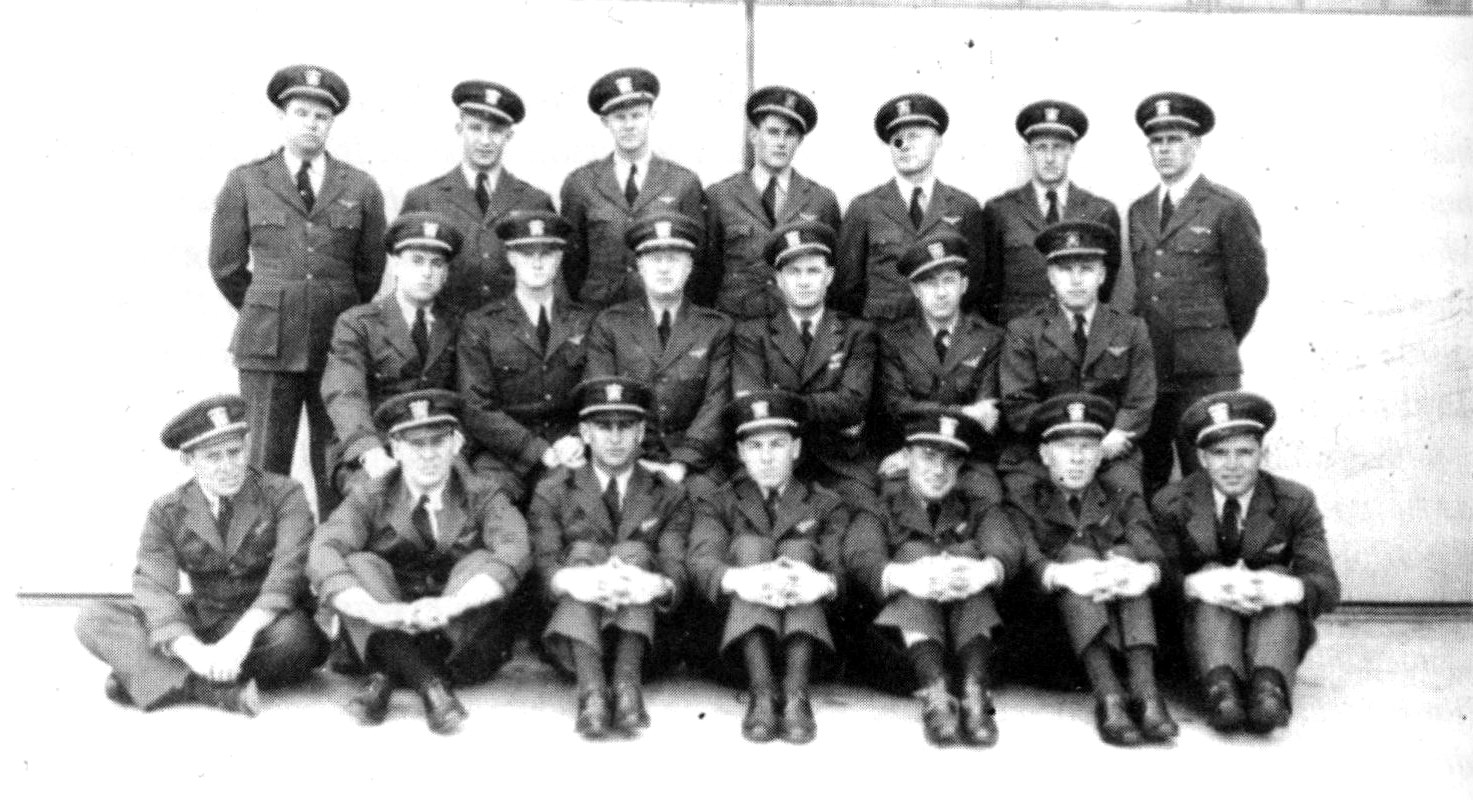
He was assigned to the USS Saratoga (CV-3) with the Pacific Fleet and transferred to North Island, San Diego, California. He was assigned to Torpedo Squadron Three (VT-3) flying Douglas TBD-1 Devastators. On deck also were Vought SB2U Vindicators and Brewster Buffaloes. Having never flown TBD-1 Devastators before, he spent weeks training in it and competing to earn an “Excellence” rating in different skills. When the crew earned one, they were allowed to paint an “E” on the side of the plane. Eventually, Tex’s crew would win one for gunnery, torpedo, and bombing.
Initially, all the pilots new to carriers learned landing on runways painted with the outline of a carrier deck. Eventually, they would try their skills on the actual carrier. For Tex, that first landing was a disaster. When he tried to catch the cable strung across the carrier deck with his tail hook, it only half caught, causing his plane to veer violently to the left. His plane crashed on the edge of the deck, with his nose pointing down toward to ocean. Luckily, he was able to climb out in safety.
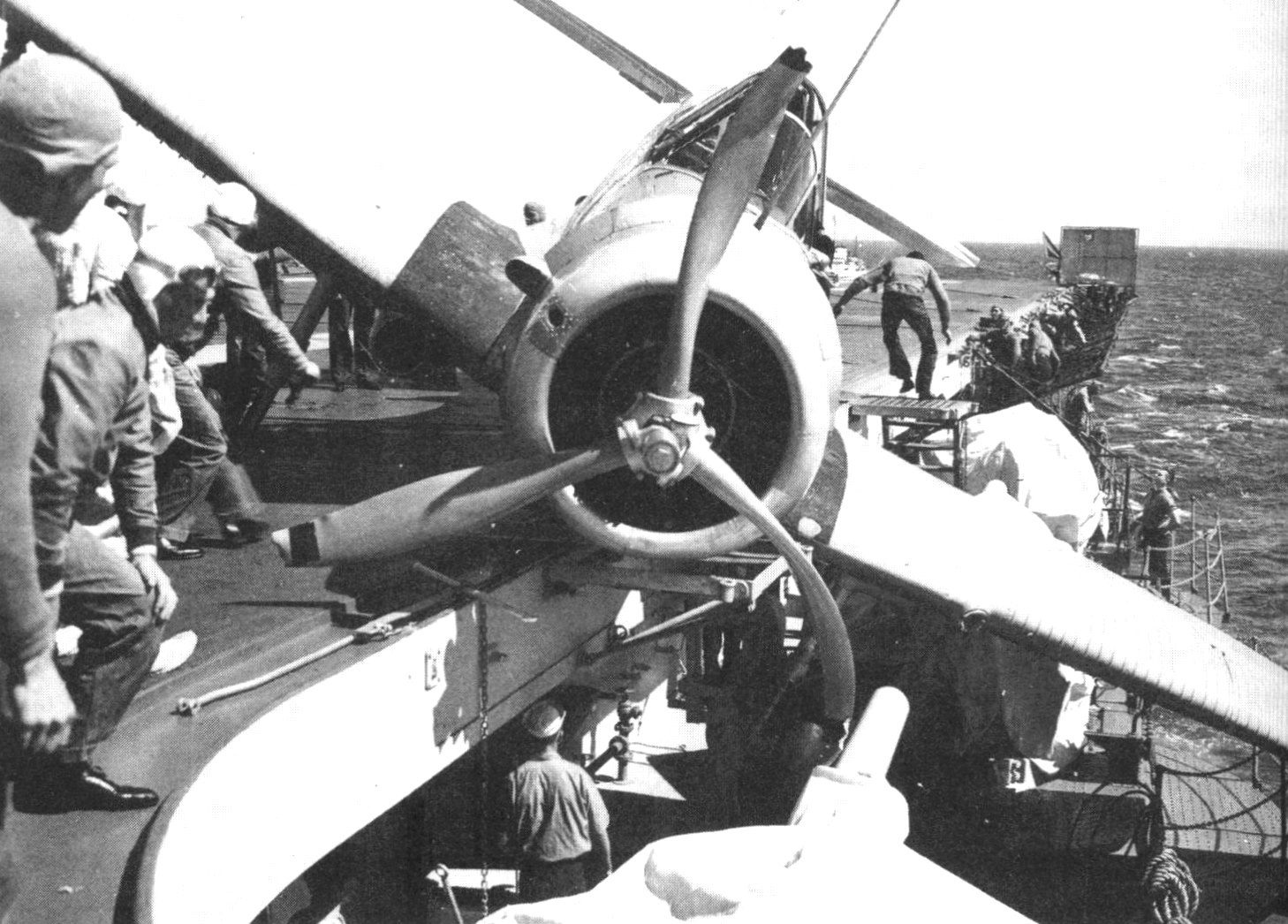
While serving on the Saratoga, Tex participated in Fleet Exercise XXI between April and June of 1940. The exercise simulated a hostile fleet attacking Guam, Wake Island, and Hawaii from the West. The exercise was to flex the US Navy’s muscle to the Imperial Japanese navy.
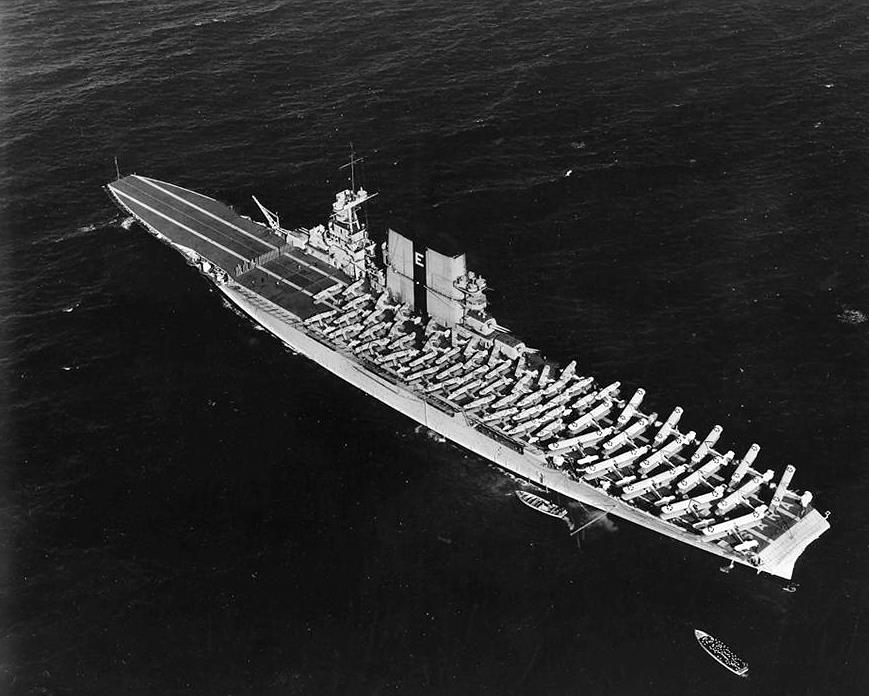
Tex Hill’s Douglas TDB-1 Devastator (Bureau Number 0326)
![]() Link to article on building Tex Hills TBD-1 model: TBD Devastator – Tex Hill: Revell Monogram
Link to article on building Tex Hills TBD-1 model: TBD Devastator – Tex Hill: Revell Monogram
The Douglas TBD-1 Devastator first entered service with the US Navy in 1937. It was a revolution in naval aircraft design with host of firsts – all metal construction, enclosed cockpit, and hydraulically folding wings. Carrying a crew of three with the pilot, bombardier, and radio operator/rear gunner, it was powered by the Pratt & Whitney R-1830 Twin Wasp engine. The Torpedo version carried a single Bliss-Leavitt mark 13 torpedo in its belly.
As with all prewar US Navy aircraft at the time, Tex’s plane carried bright ‘orange-yellow’ painted wings (federal standard 13538). As of March 1937, the different carriers were identified by the rear tail color – white was for Saratoga. Each aircraft were further identified by the color of its cowling, Tex’s plane was 3-T-13 to indicate the 3rd Torpedo Squadron, plane # 13. The cowling was painted Green. Other planes in the same squadron would have had blue, white, red, or black cowlings and each cowling would have been differed by only having the top, bottom, or its entirety painted depending on its aircraft number. Tex Hill’ aircraft sported a green fuselage band to indicate his status as section leader.
His aircraft’s Bureau Number (0326) was painted on the tail, immediately preceding the aircraft type ‘TBD-1’. His aircraft had his squadron patch the “Flying Dragons” – a red dragon with its tailed delivering a bomb. Next to it was the White “E” to indicate Tex’s crew received an “Excellence” rating. While the Devastator was an all metal plane, US Naval aircraft at the time was painted over with silver dope.
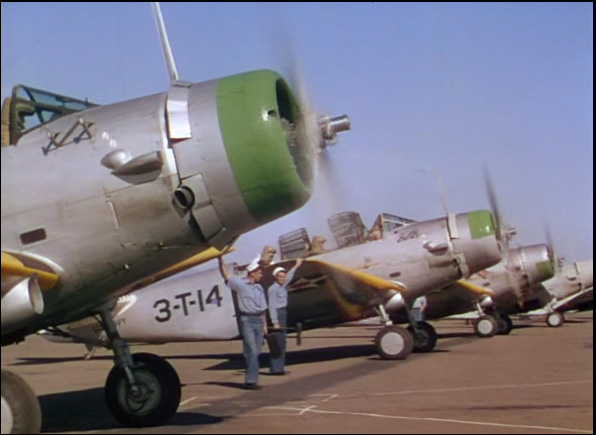
From Warner Pictures “Dive Bomber” 1940, Devastators assigned to Tex Hill’s Squadron VT-3. The plane in the foreground is the plane assigned to Tex, 3-B-13. Notice there are no squadrons mascot painted on this plane or 3-B-14 at the time.
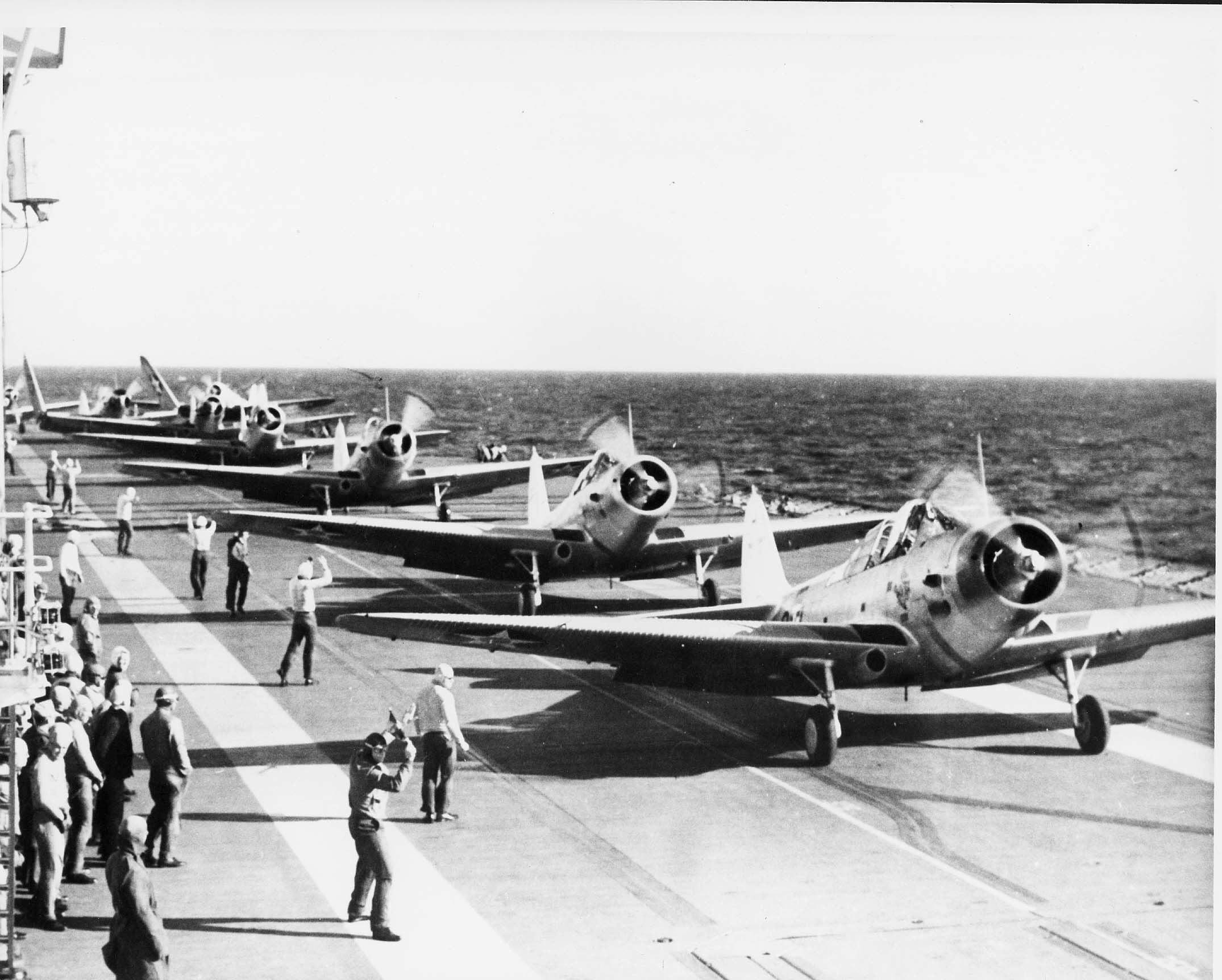
VT-3 lined up on board the USS Saratoga waiting for takeoff (Source: US Navy)
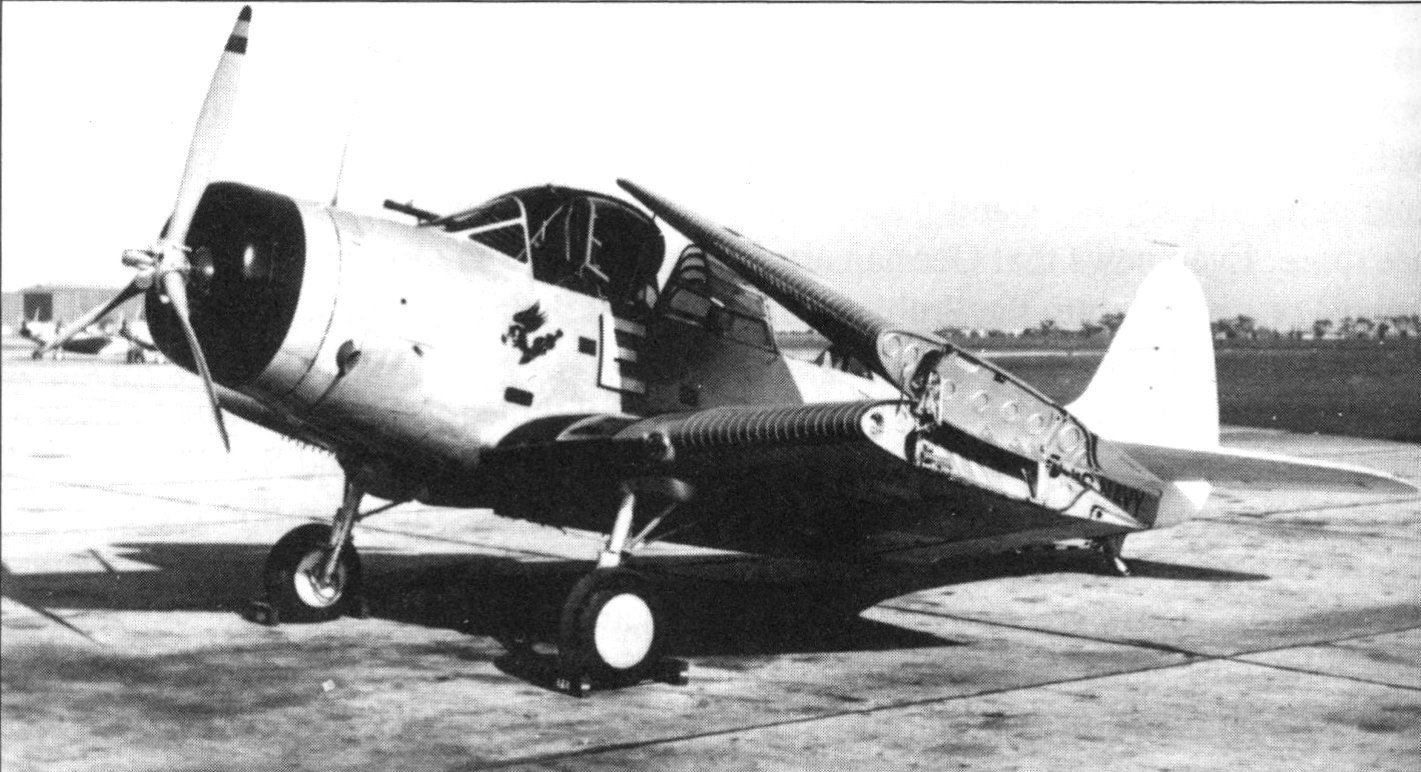
Tex Hill’s Devastator on North Island, San Diego – notice the large E on the side (Source: Tex Hill)
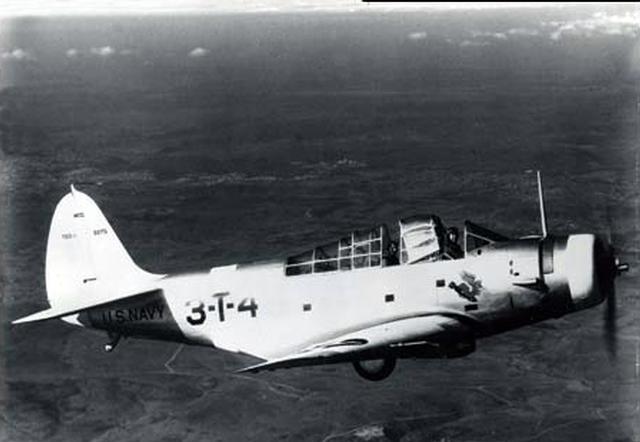
Devastator 3-B-4 from Tex’s squadron, you can clearly see the mascot – a red dragon holding a torpedo in its claw. The plane also carries the distinctive white tail of the USS Saratoga (National Archives).
Another plane from the VT-3 Squadron, the complete color ring around the cowling indicates its status as a section leader. (US Navy)
